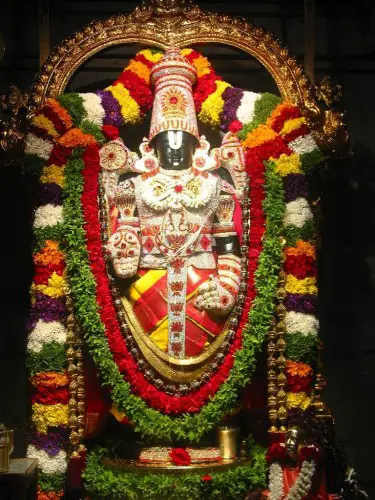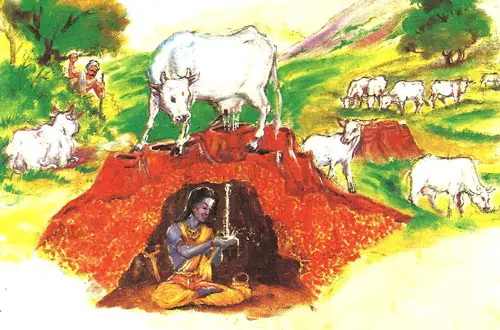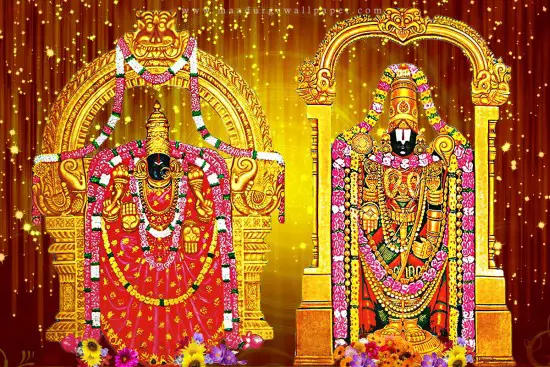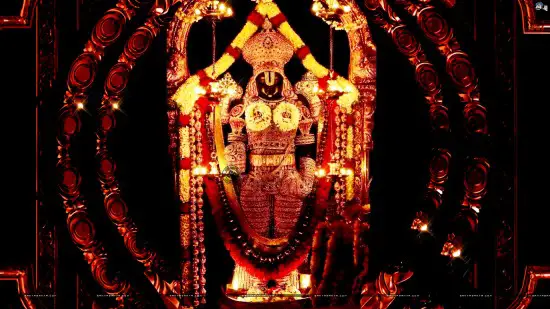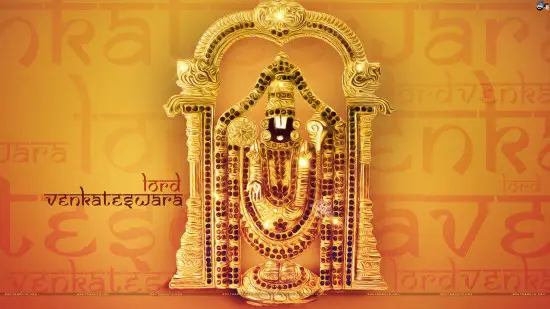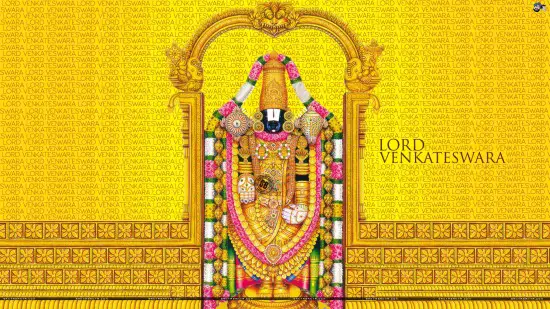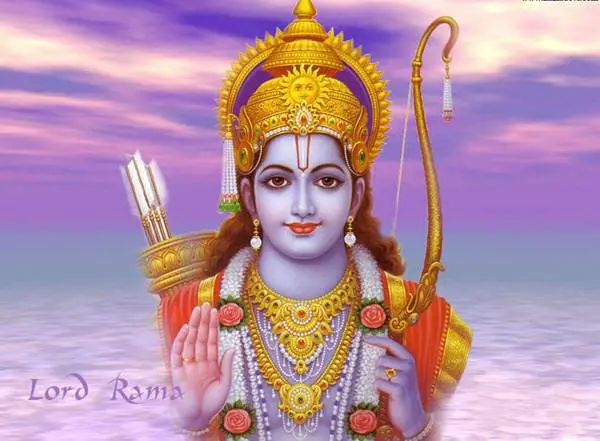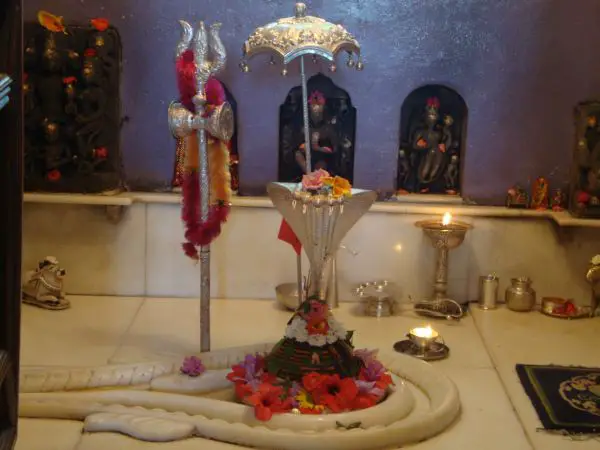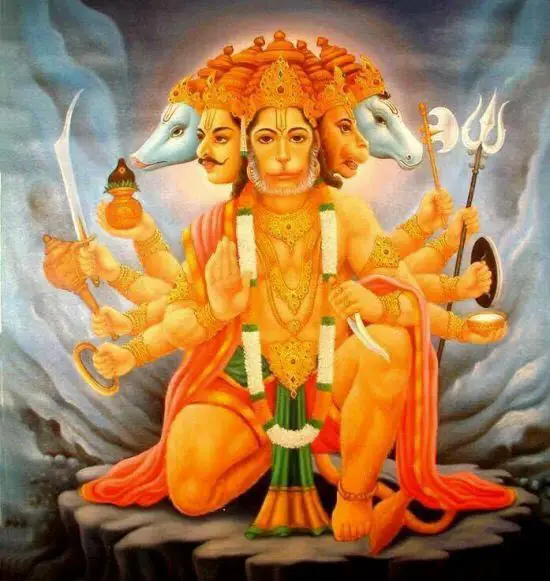Lord Venkateswara who is also known as Balaji, Venkata, Venkata Ramana, Srinivas, Venkatacalapati, Govinda is a form of the Hindu God Vishnu.
The most prominent temple of Venkateswara is the Tirumala Venkateswara Swamy Temple which is located in Tirupati, Andra Pradesh in India.
The literal meaning of Venkateswara is “Lord of Venkata.”
It is a combination of the words Venkata (the name of a hill in Andra Pradesh) and Isvara meaning “Lord.”
In fact, the Brahmanda and Bhavishyottara Puranas describe the word Venkata as “destroyer of sins” where vem means sins and kata means the power of immunity.
This post is dedicated to the Lord Venkateswara Story, Miracles, and Images.
Table of Contents
Lord Venkateswara Story
According to Hindu scriptures, Venkateswara Swamy is an incarnation of Lord Vishnu who appeared in the Kali Yuga age for the salvation and upliftment of humanity.
In fact, Venkateswara Swamy is considered to be the supreme form of Vishnu in this age of Kali Yuga.
The Venkateswara Swamy Temple which is located in the Tirumala Hills in the temple town of Tirupati (Andra Pradesh) is called as Kali Yuga Vaikuntam.
Lord Venkateswara is depicted as having a dark complexion and four hands.
In his upper two hands, Lord Venkateswara holds a discus (a symbol of power) and a conch shell (a symbol of existence).
His lower hands are extended downward wherein the Lord asks the devotees to have faith and surrender to him for protection.
Once it so happened that some rishis headed by Kashyap Muni began to perform a Yagna ceremony on the banks of the River Ganges.
Sage Narada visited them and inquired about the reason for performing the sacrifice. He also asked them who would be pleased by it.
The rishis were much bewildered by the question and approached Sage Bhrigu to seek a solution.
Sage Bhrigu wanted to get a direct ascertainment of reality before answering to the rishis.
So, he first went to Satyaloka, the abode of Lord Brahma.
At Satyaloka, Sage Bhrigu found that Lord Brahma was reciting the four Vedas with each of his four heads. He was attended upon by Saraswati.
Moreover, Lord Brahma ignored Bhrigu offering obeisance.
So, he concluded that Lord Brahma was unfit for worship.
Bhrigu then left Satyaloka for Kailash, the abode of Lord Shiva.
At Kailash, Bhrigu noticed Lord Shiva spending his time pleasantly with Parvati. Moreover, Lord Shiva did not notice his presence.
When Parvati drew the attention of Lord Shiva to the presence of Bhrigu, He became furious at Bhrigu’s intrusion and attempted to destroy him.
Bhrigu was much disturbed by the attitude of Lord Shiva.
He cursed Lord Shiva and left Kailash for Vaikuntam, the abode of Lord Vishnu.
At Vaikuntam, Bhrigu saw Lord Vishnu reposing on Adishesha.
Sri Mahalakshmi was in service of Lord Vishnu sitting beside his feet.
Thinking that Lord Vishnu did not notice him, the Sage got infuriated and kicked the Lord on His chest.
It is regarded as the place where Mahalakshmi resides.
However, Lord Vishnu was quick to apologize to the angry sage.
Lord Vishnu pressed his feet to allay the pain caused to Bhrigu’s leg. In doing so, Lord Vishnu removed the eye in the foot of the sage which deprived him of his special powers.
Thereupon, Sage Bhrigu concluded was the most supreme of the Trimurti Gods and told the same to the rishis.
However, Sri Mahalakshmi was much grieved and angered to see the Lord apologizing to Bhrigu who committed an offense.
In anger and anguish, Sri Mahalakshmi left Vaikuntha and resided in a place called Karavirapur which is now known as Kolhapur.
Forlorn Vishnu was much grieved by the departure of Mahalakshmi and left Vaikuntha.
He took refuge in an ant-hill under a tamarind tree on the Venkata Hill. He lived without food and sleep and meditated for the return of Mahalakshmi.
It was the place where the Lord took the form of Varaha to protect Mother Earth from the deep ocean.
Both Brahma and Shiva were much grieved to see the plight of Lord Vishnu. They assumed the forms of a cow and its calf to serve him.
Lakshmi took the form of a cow and sold the cow and calf to the king of Chola Empire.
The Chola King sent them to graze on the Venkata Hill along with the cattle herd.
The cow provided its milk to Vishnu and thus fed him.
Meanwhile, the cow did not yield any milk at the palace.
The Chola Queen got immensely angry and chastised the royal cow herder severely.
Now, the cow herder followed the cow secretly and found out that the cow emptied her udder over the ant-hill.
The cow herder intended to harm the cow and flung his axe upon the cow.
However, Vishnu saved the cow and received the blow upon him.
Seeing the sight, the cow herder fell down and died of shock.
The cow returned to the palace with blood stains all over her body. The king wanted to know the cause of cow’s terror. So, he followed her and found the cow herder lying dead on the ground.
Vishnu came out of the ant-hill and cursed the king to become a demon (Rakshasa) due to the fault of his servant.
The King pleaded and begged for pardon.
Vishnu blessed the king and said that he would be born as Akasa Raja and his curse would end when he presents a crown to him at the time of his marriage with Padmavati.
After that, Lord Vishnu as Srinivas decided to live in the Varaha Kshetra. He requested Varaha (the boar avatar of Vishnu) to provide him a site for his stay.
Srinivas ordained that a pilgrimage to his shrine should be preceded by a bath in the Pushkarini and the worship of Varaha before him.
Vishnu constructed a hermitage and lived there. He was attended by Vakula Devi who took much care of him like a mother.
After some time, a King named Akasa Raja came to rule over Tondamandalam. He was childless. So, he performed a sacrifice for gaining an heir.
One day, he was plowing the fields. The plow struck a lotus. It had an infant girl in it. A divine voice told Akasa Raja that the girl would be a harbinger of good fortune.
Akasa Raja adopted the girl and named her as Padmavati. The girl grew up into a beautiful maiden.
One day, while Srinivas was hunting, he happened to chase a wild elephant in the forests. He came to a garden where Padmavati and her maids were picking flowers. The wild elephant frightened the princess.
However, he turned around and saluted Srinivas and disappeared into the forest. Srinivas fell in love with Padmavati. He returned to the hills and told Vakula Devi that he wanted to marry Padmavati.
Srinivas also narrated the story of Padmavati previous birth as Vedavati. He had promised to marry her. Vakula Devi offered to go to Akasa Raja to arrange for the marriage.
Meanwhile, Akasa Raja and his queen Dharanidevi learned about Padmavati’s love for Srinivas. So, Akasa Raja consulted Guru Brihaspati about the marriage.
Guru Brihaspati told him that the marriage would be in the best interest of both the parties.
Srinivas borrowed money from Kubera, the god of wealth for meeting the expenses of the marriage.
Finally, Srinivas married Padmavati in the presence of all the gods.
Now, the Venkateswara’s chief temple is located on the hills of Tirumala which happens to be the location of the divine marriage.
Lord Venkateswara Miracles
Here, we narrate one of the most amazing miracles of Lord Venkateswara of Tirumala Tirupati.
It’s an amazing miracle which occurred almost three and half decades ago in the holy abode of Lord Venkateswara at the Tirumala Tirupati Temple.
The miracle occurred in the holy temple of Tirumala on the midnight of 7th November 1979. At that time, the whole of Tirumala was in a deep sleep. The whole of temple shrine was filled with absolute silence.
It was at the dark hour when the miracle occurred suddenly and took the entire Tirumala hill shrine by shock and surprise.
The huge bronze bells that were hanging in front of Lord Venkateswara in the Sanctum Sanctorum of the Tirumala Tirupati Temple started to ring on their own without anyone touching them.
The waves of the heavy metal sound rose across the whole of Tirumala Hill Shrine.
The huge sound of the Bronze bells shocked the security staff, the police, the pilgrims, the officials, the temple staff, and the Purohits. They woke up startled and came running to the main Temple.
They could not believe their eyes how the huge bronze bells could ring on their own, without anyone touching them.
It was even more surprising as the bells continued to ring in that fashion for about five minutes and then stopped on their own.
It was a miracle for all those gathered there; an unbelievably true state.
It was mysterious, miraculous, and amazing.
So, one has been able to give a valid explanation for this “miracle.”
And that’s why it’s a miracle.
In fact, the doors of the main temple including those of the Sanctum Sanctorum are fully locked from the outside after the Ekanta Seva – the final Pooja done in the temple every night.
No one could enter the Sanctum Sanctorum until they have opened the next morning again for the Suprabhata Seva.
There is nobody inside the Sanctum Santorum except Lord Venkateswara himself.
Why are Lord Venkateswara Eyes closed?
Lord Venkateswara is regarded as the most famed Hindu God of our times. His idol is installed in the Tirumala Tirupati temple in Andra Pradesh, India.
Lord Venkateswara temple is world famous for attracting a huge number of devotees every day. This temple happens to be the wealthiest temple on the earth.
In fact, there are several mysteries associated with the Lord Venkateswara idol in the sanctum sanctorum of Tirumala Tirupati temple.
One such popular mystery is, “Why Lord Venkateswara Eyes are closed?”
Here, we dwell into the origin of this question and explore some interesting answers to it from different sources.
This question or mystery springs from the fact that the Lord Shri Venkateswara idol at the Tirumala Tirupati temple is decorated with a huge size Namam which is a sacred forehead mark of Vaishnavites. It nearly covers more than half of the idol’s eyes.
While there is a large section of Venkateswara Swamy devotees that accept the fact as it is, there are several others who put forward the question “why the Namam size should not be reduced?” allowing devotees to have a fulfilling Darshan of the Lord’s radiant eyes.
Here, are some interesting facts about the Namam used over Venkateswara’s eyes.
Namam is prepared with Powered Camphor
The white colored Namam which is applied on the forehead of Lord Shri Venkateswara is a very broad application. It is prepared with powdered camphor.
This application is performed by the temple priests on the idol once a week on Fridays following the Abhishekam ritual which is a sacred bath to the idol.
However, on Thursdays, the size of the Namam is reduced considerably allowing the eyes of the Lord to expose more than usual. It is known as Netra Darshan. It allows the devotees to enjoy the vision of the Lord’s eyes.
There is another very interesting ritual associated with Lord Venkateswara. It is performed on Friday (specifically Friday mornings).
The Lord Venkateswara idol is given a sacred bath on Friday mornings. It’s a “once a week ritual.” Herein the Namam is removed before bath. The glance of the Lord is powerful and blazing.
There is a custom wherein a heap of tamarind rice is kept in front of the Lord.
It is done to reduce the quell of his powerful rays coming out of the eyes of Lord Venkateswara.
The Lord’s sight falls on it and not on the devotees.
Once the Abhishekam is completed, a new Namam is done for the Lord immediately.
Herein, it should be noted that the Namam (which is worn by Lord Venkateswara) is a symbolic representation of Vaishnavism.
Moreover, there are two Vaishnavites sects by the name of Vadagalai and Tengalai which are prominent in Vaishnavism.
They have adopted the “U” shaped and “Y” shaped Namam respectively.
However, the Lord Venkateswara temple uses the unique combination of the English letters U and Y for representing these two sects together.
Lord Venkateswara is just, impartial and strict with everyone. He is the self-manifested deity who cannot tolerate the wrongdoings of the people during the present age of Kali Yuga.
The Namam is applied to subdue the angry looks of the Lord which can scorch the earth to flames.
The Namam is made of fresh camphor which has a cooling effect on the Lord. Plus, it partially covers the eyes of the Lord.
Lord Venkateswara Images
There are millions of devotees of Lord Venkateswara. Each year millions of devotees visit the Lord Venkateswara temple at Tirupati Tirumala. It’s the most famous temple of Lord Venkateswara.
To further heighten up your devotion and have the glimpse of the Lord in its varied forms and grandeur, we have come up with a section showcasing Lord Venkateswara images. These are Lord Venkateswara HD Images.
So, have a look at these Lord Venkateswara photos and dwell yourself in sheer devotion for the Lord. These are the most popular Lord Venkateswara Images.
We hope that the article has shed much information on the glory of Lord Venkateswara.
Jai! Jai!! Lord Venkateswara!!!

